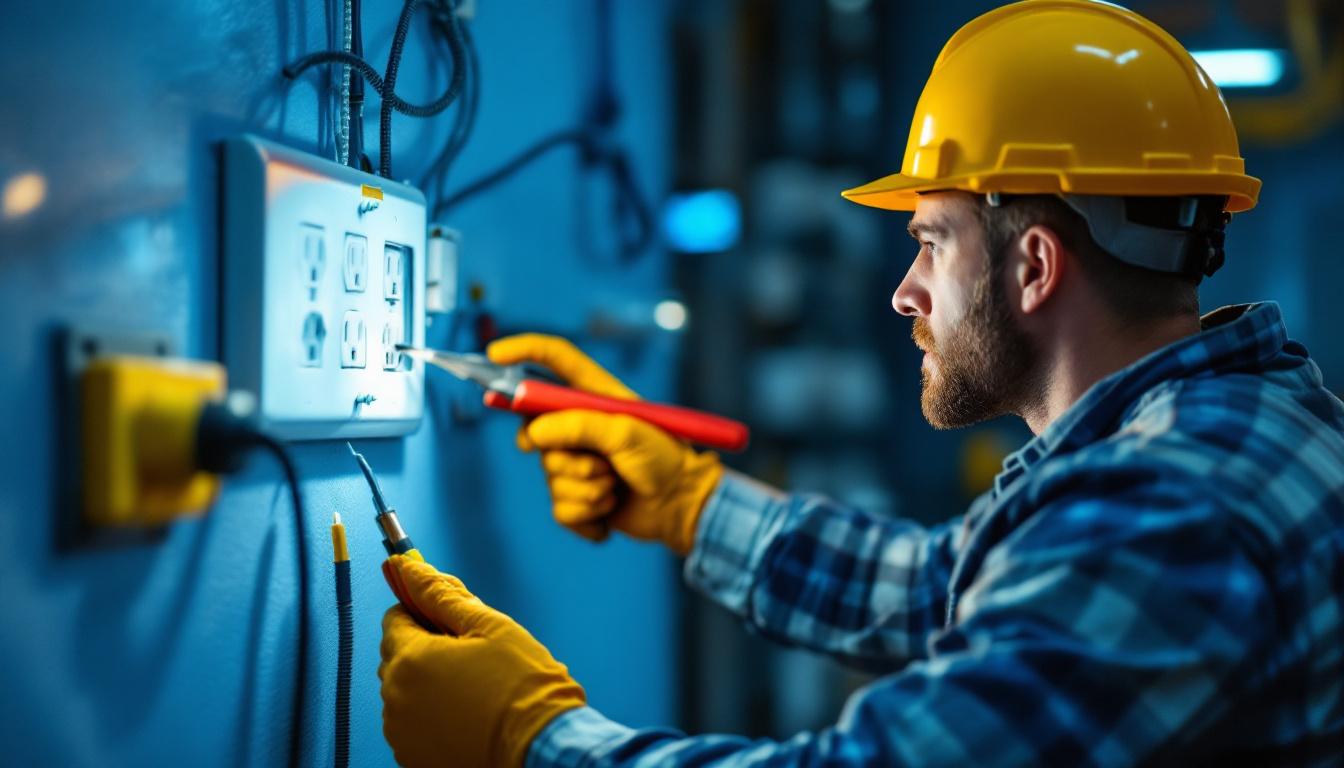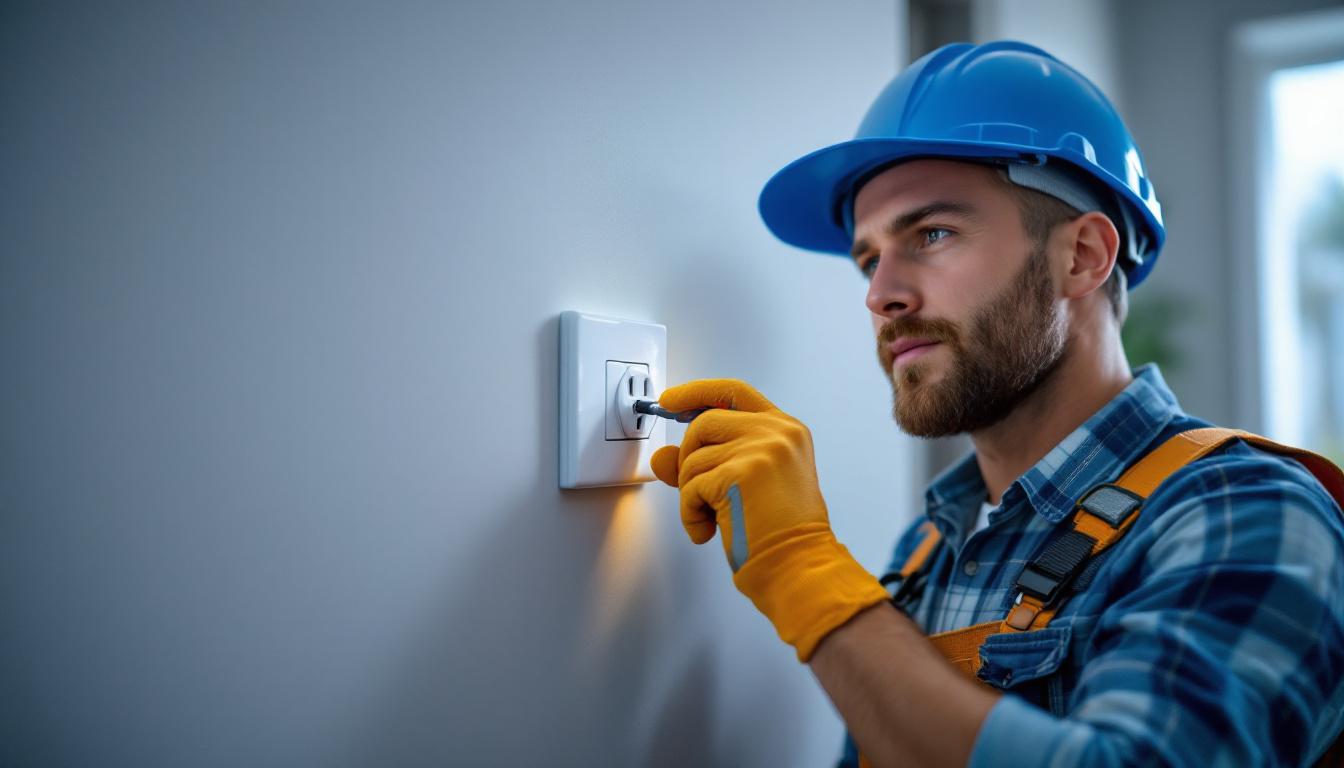
As the demand for efficient and safe electrical installations continues to grow, lighting contractors must stay informed about the various components that contribute to a successful project. One such component is the electric washer outlet. Understanding its importance, installation requirements, and safety considerations can significantly enhance the quality of work provided by lighting contractors. This article delves into the essential aspects of electric washer outlets, offering valuable insights for professionals in the field.
Electric washer outlets are specialized electrical receptacles designed to accommodate washing machines and other heavy-duty appliances. These outlets are typically rated for higher amperage and voltage compared to standard outlets, ensuring they can handle the substantial electrical load required by such appliances. As a lighting contractor, recognizing the differences between standard outlets and electric washer outlets is crucial for ensuring compliance with electrical codes and providing safe installations.
Electric washer outlets come with distinct features that set them apart from regular outlets. Primarily, they are rated for 20 amps and are often configured to accept a specific type of plug, usually a NEMA 5-20R. This configuration prevents the use of incompatible plugs and ensures that only appliances designed for that outlet can be connected.
Additionally, electric washer outlets are typically installed in dedicated circuits to prevent overload and ensure that the appliance operates efficiently. This dedicated circuit is essential for minimizing the risk of tripped breakers and electrical fires, which can occur if multiple high-draw appliances are connected to a single circuit. Moreover, these outlets are often equipped with ground fault circuit interrupters (GFCIs) to enhance safety, especially in areas prone to moisture, such as laundry rooms. GFCIs help protect against electrical shock by cutting off power when an imbalance is detected, making them a vital component in any installation involving water and electricity.
While the primary application of electric washer outlets is for washing machines, they are also suitable for other heavy-duty appliances such as dryers and dishwashers. In residential settings, these outlets are often installed in laundry rooms or utility areas, providing a reliable power source for essential household appliances. The strategic placement of these outlets can significantly enhance the functionality of laundry spaces, allowing homeowners to maximize efficiency while managing their laundry tasks.
In commercial settings, electric washer outlets may be found in laundromats, where multiple washing machines require dedicated circuits for safe and efficient operation. Understanding the applications of these outlets allows lighting contractors to make informed decisions when designing electrical systems for various projects. Furthermore, in multi-family housing units, such as apartment complexes, the installation of electric washer outlets in shared laundry facilities can provide residents with convenient access to laundry services. This not only improves tenant satisfaction but also increases the property’s appeal, making it a worthwhile investment for property managers. The versatility and reliability of electric washer outlets make them an indispensable element in both residential and commercial electrical planning.
Proper installation of electric washer outlets is critical to ensuring safety and functionality. Lighting contractors must adhere to specific guidelines and best practices to guarantee that these outlets are installed correctly and comply with local electrical codes.
When selecting a location for an electric washer outlet, several factors must be considered. First, the outlet should be installed within easy reach of the appliance it will serve. This typically means placing the outlet within a few feet of the washing machine or other heavy-duty appliance.
Additionally, the outlet should be installed at a height that allows for easy access while minimizing the risk of water exposure. Ideally, the outlet should be positioned at least 12 inches above the floor to avoid potential water damage from spills or leaks. Furthermore, it is advisable to avoid placing the outlet behind the washer or in cramped spaces where it may be difficult to access. A well-thought-out location not only enhances convenience but also promotes safe operation, reducing the likelihood of accidents during appliance use.
Wiring for electric washer outlets must meet specific requirements to ensure safety and compliance with electrical codes. Typically, a 12-gauge wire is used for 20-amp circuits, and the wiring should be run in a manner that minimizes the risk of damage. This may involve using conduit or other protective measures to shield the wiring from potential hazards.
It is also essential to ensure that the circuit is protected by a Ground Fault Circuit Interrupter (GFCI) breaker, especially in areas where water exposure is a concern. GFCI breakers help prevent electrical shock by cutting off power when a ground fault is detected, making them a vital component of any installation involving electric washer outlets. Additionally, it is important to consider the overall load on the circuit. If multiple appliances will be used simultaneously, it may be necessary to consult with a licensed electrician to determine if a dedicated circuit is required, ensuring that the electrical system can handle the demand without risk of overload or tripping the breaker.
Safety is paramount in any electrical installation, and electric washer outlets are no exception. Lighting contractors must be aware of the potential hazards associated with these outlets and take appropriate measures to mitigate risks.
Electrical codes vary by region, and it is essential for lighting contractors to familiarize themselves with the local regulations governing electric washer outlets. These codes dictate the installation practices, wiring requirements, and safety measures that must be followed to ensure compliance and safety.
Failure to adhere to these codes can result in fines, project delays, and most importantly, safety hazards. Regularly reviewing and updating knowledge of electrical codes is a best practice for lighting contractors to maintain compliance and ensure the safety of their installations.
Overloading circuits is a common issue that can lead to electrical fires and equipment damage. When installing electric washer outlets, it is crucial to ensure that the dedicated circuit is not shared with other high-draw appliances. This not only prevents tripped breakers but also enhances the overall safety of the electrical system.
Contractors should also educate clients about the importance of using the correct appliances with the installed outlets. Using appliances that exceed the outlet’s rated capacity can lead to overheating and potential fire hazards, making it vital to emphasize the importance of compliance with manufacturer specifications.
Even with proper installation, electric washer outlets may require maintenance and troubleshooting over time. Lighting contractors should be prepared to address common issues that may arise with these outlets, ensuring that clients receive the best possible service.
Regular inspections of electric washer outlets can help identify potential issues before they become significant problems. Contractors should recommend that clients periodically check the outlets for signs of wear, such as discoloration, burning smells, or loose connections. Addressing these issues promptly can prevent more extensive damage and ensure the continued safe operation of the appliances.
Lighting contractors should also be equipped to troubleshoot common problems associated with electric washer outlets. For instance, if a washing machine fails to operate, it may be due to a tripped breaker or a faulty outlet. Understanding how to diagnose these issues can save time and resources, allowing contractors to provide efficient solutions for their clients.
Additionally, it is essential to educate clients on how to recognize signs of trouble, such as frequent tripping of breakers or unusual noises from the outlet. This knowledge empowers clients to take proactive measures and seek assistance when necessary.
As technology continues to evolve, so too do the standards and practices surrounding electric washer outlets. Lighting contractors should remain informed about emerging trends that may impact their work and the installations they provide.
The rise of smart home technology is influencing the design and functionality of electric washer outlets. Many modern appliances now come equipped with smart features that allow for remote monitoring and control. This trend is likely to extend to electric washer outlets, with the potential for outlets to become integrated into smart home systems.
Contractors should consider the implications of this trend when designing electrical systems for clients. Understanding how to incorporate smart technology can enhance the value of services provided and position contractors as forward-thinking professionals in the industry.
With an increasing focus on sustainability and energy efficiency, future electric washer outlets may be designed to meet stricter energy standards. This could involve the development of outlets that minimize energy consumption or incorporate energy monitoring capabilities.
Lighting contractors should stay abreast of these developments, as they may require adjustments to installation practices and client education. Emphasizing energy efficiency not only aligns with industry trends but also appeals to environmentally conscious consumers.
Electric washer outlets play a vital role in the safe and efficient operation of heavy-duty appliances. For lighting contractors, understanding the features, installation guidelines, safety considerations, and emerging trends related to these outlets is essential for providing quality service and ensuring client satisfaction.
By staying informed and adhering to best practices, lighting contractors can enhance their expertise and contribute to the safety and efficiency of electrical installations. As the industry continues to evolve, embracing new technologies and standards will be key to remaining competitive and meeting the needs of clients.
In summary, the knowledge and skills surrounding electric washer outlets are indispensable for lighting contractors. By prioritizing safety, compliance, and innovation, professionals can position themselves as trusted experts in the field, ultimately leading to successful projects and satisfied clients.
Ready to elevate your electrical projects with the highest quality lighting products? Look no further than LumenWholesale. We provide lighting contractors like you with spec-grade lighting essentials at unbeatable wholesale prices. Say goodbye to local distributor markups and hello to a vast selection of reliable, high-performance lighting solutions that meet the most rigorous industry standards. Plus, with free shipping on bulk orders, you can stock up on everything you need while enjoying the best value. Don’t compromise on quality or price. Visit LumenWholesale now to discover how we blend quality, affordability, and convenience for your professional success.

Discover the essentials of selecting recessed art lighting with our comprehensive guide tailored for lighting contractors.

Discover how electric wall sockets can save lighting contractors time and money with faster installation, increased efficiency, and reduced costs—boost your projects today!.

Discover how edge-lit exit signs are revolutionizing the lighting industry by offering simplicity and efficiency for contractors.

Discover why head led lights are the unsung heroes of lighting projects.